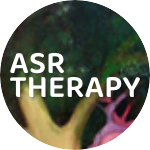GPASC – Sexual & Physical Trauma with Possible Dissociation & Addictions
Attendees will have the opportunity to experience a practical approach for conducting group psychotherapy for those with PTSD/CPTSD/ and Addictions. This approach will offer a perspective for dealing with “trauma clusters” which are frequently present with the PTSD/CPTSD/Addicted population. The small group experience will address concerns regarding, what type of treatment is appropriate, when to treat/ timing issues, how to treat two or more disorders concurrently, and the why or rationale of treatment modalities. The primary focus will be on patient state/ affective regulation attachment problems and solutions.
Research shows significantly high rates of co-morbidity 60%-80% of PTSD and Addictive Disorders(Jacobson, Southwick, Kosten, 2001). Most importantly, research also shows the strongest predictive factor significantly related to decrease in the severity of PTSD symptoms is positive group support (Guay, Billette, & Marchand, 2006). As far as the timing of the treatment is concerned, Quimette, Moos, and Finney (2003) found that patients with substance use disorders and PTSD who received focused treatment for PTSD immediately following treatment for the substance use disorder, along with participation in a twelve-step program during the first year of treatment, were more likely to experience long-term (five-year) remission from the substance use disorder.
Both Post-Traumatic-Stress-Disorder and Addictive Disorders frequently result in significant impairment in the areas of regulation and attachment. These impairments are significant concerns for transference and counter-transference issues in the group experience. The group can offer a reparative experience for both regulation and attachment issues.
With patients who may have experienced dissociation, sexual abuse, avoidance, derealization, depersonalization, numbness, isolation, despair, terror, hypervigilence, self-medicated dysregulated states through the abuse of substances, dysfunctional attachment patterns, disorganizing traumatic experiences where perception and reality did not match, betrayal, and depression, participation in the group experience offers an opportunity to develop biological-psychological-social coping mechanisms. A group can offer a forum for the patient to activate life-supportive responses in the areas of interoception, compassion, unavoidable rupture with REPARATIVE EXPERIENCES on the heels of verbal or nonverbal triggering experiences. Each individual’s historical trauma can be understood and re-worked through the lens of reflective thought and collective group resonating experiences.
More often than not, the reparative action necessary for healing with the above population can only be activated by the presence of “another.” Until self-regulatory experiences are practiced, the group offers (as van der Kolk’s recent work describes) “a place to run to, a place to go.” (van der Kolk, 2007)
Providing a cohesive process/supportive group experience addresses themes and issues, which emerge for the patient both in the group, with therapeutic facilitation, and in his or her everyday experience. Reparative social experiences can be further developed by encouraging patient participation in additional twelve-step groups and other adjunctive experiences with consideration for individual timing and pace.
